Why and what's a climbing meet
To improve climbing practice and sharing experiences is one of the best mission of mountaineering associations in the whole world. Since a lot of time ago,
British Mountaineering Council (BMC) every year organizes different international climbing meets, both on rock and ice.
Also other Clubs organize international meets, such as
American Alpine Club and, since 2010,
Club Alpino Accademico Italiano.
During the meet's weeklong run, climbers coming from various Associations, Clubs and Mountaineering Federations throughout the world meet and stay together to share experiences, often quite different and so very interesting and important to develope and increase technical ability and ethical maturity.
On the middle week of last month of May (12–19 may 2013) BMC organized the International Sea Cliff Climbing Meet in Cornwall, based in the shelter named
"The Count House",
near Penzance, West Cornwall, situated about 220 miles from Bristol. Many climbing federations in the world were invited to send confirmate climbers (one each nation).
![A couple of young climbers on Doorway, Bosigran Cliff]() Rough sea below Doorpost, Bosigran
Rough sea below Doorpost, Bosigran
| ![An exciting start on Right Angle Cliff]() An exciting start on Right Angle, Gurnards Head Area, North coast
An exciting start on Right Angle, Gurnards Head Area, North coast |
Most of the area’s cliffs rise from sea level, so they are affected by tide and this provides an added excitement, but also an added danger, despite being generally quite short and on good rock.
The rock kinds are mainly granite, greenstone and killas, a dark rock well receptive to natural protection placements, mainly small wires.
Cornish Sea-Cliffs are a perfect school ground to practise clean climb, a kind of climb increasing fantasy, autonomy, responsibility and freedom, as an important alternative to the technological climb on bolted routes, which is a product of our modern society, showing a prevailing propensity of “securisying” all, even the climb, as well as every other social expression, which has to be completely “securitised”: in such a manner, freedom, fantasy, autonomy and personal responsibility are no longer basic rules.
It’s important to know that
Tides
Most of the area’s cliffs are rising from sea level and so they are affected by tide, and here tide sometimes rises up a lot of meters. This fact adds an enjoyable excitement to climbing, but also a real danger if you are not well informed about: tide-tables can be bought every where and give guidance to the time of high and low water for the current year (they changes in continuous).
Weather
In Cornwall you can climb all-year-round, but the best period goes from late spring to autumn, when the rock is often well dry and the temperature are mild.
![The shelter (the Count House)]() The Count House (Bosigran)
The Count House (Bosigran)
| ![Trewavas Cliff signpost, Bosigrain, Cornwall]() Trewavas Cliff signpost
Trewavas Cliff signpost |
Pay attention to swells, not only with stormy weather, of course, but even in windless conditions and apparently calm sea: dangerous swells can suddenly arise high in the wall. Always belay when you are close to the sea level.
Equipment of the routes
Ancient pegs can be found in some cliffs, but you have to be aware of because of corrosion. Pegs were used in the past, due to the absence of other protection techniques.
From 1993 it was agreed by local climbers that bolts and other modern fixed gear had no place in this area (BMC, 1993).
If you decide to spend some climbing days in this area, you need
“West Cornwall” a Climbers’ Club Guide divided in two books, showing all you need know about climbing. The guide agrees with Climbers’Club policy statement, supporting the tradition of using natural protection and opposing all irreversible acts on crags, such as removal of vegetation, placing bolts, altering the rock, creating holds, interference with flora and fauna and so on.
Ethics and rules
Environment - Developed Crags can be responsible of damages in Cornwall eco-System. Some years ago representatives of climbers and environmental organizations identified environmental problems and decided to promote good environmental practice in the area. A Climbers Code for Cornwall was proposed to keep at a minimum the risk of damage of this sensitive area.
Climbers Code for Cornwall
- Respect land ownership. Continuing access depends on co-existence.
- Tread lightly on the approach as well on the face. Please avoid wearing heavy walking boots when descending vegetated slopes and gullies. Where possible, follow existing access paths. Do not create new paths, or shortcuts, on existing paths.
- Try to avoid going to cliffs in large groups. Base your changing area on bare rock where possible.
- Keep noise to a minimum. Leave no litter.- Do not “garden” vegetation or lichen on new or established routes, at any time of the year. Cracks and seams in the rock are often crucial habitats for insect life. Stripping of live vegetation is against the law.
![Sean Kelly traversing on Right Angle]() Sean Kelly traversing on Right Angle
Sean Kelly traversing on Right Angle![Paul climbing last pitch of Martell Slab, Cornwall]() Paul Donnithorne climbing last pitch of Martell Slab, South coast
Paul Donnithorne climbing last pitch of Martell Slab, South coast, especially during the sensitive bird breeding and plant growth season on March to July.
- Keep up to date with agreed, published restrictions and respect these.
- Respond constructively if approached by National Trust staff or by officers of English nature, or by Countryside Officers of local and regional authorities.
- Avoid negative confrontation with other cliff users, and with farmers, private landowner, or their employees.
- Please report any problems to the local BMC Access Representative or
the BMC Access Officer.
- Consider seeking advice from National Trust staff if planning new routes, especially in underdeveloped areas.
The trip (2013, May)
What a great week!
So I thought and told me and my friends coming back from the International Orco Trad Meet on September 2012, when I was host of foreign climbers during a whole week of climbing on the perfect granite rock of this Italian alpine valley.
And the same I thought and told again coming back from
BMC International Sea Cliff Meet in Bosigran, Cornwall on May 2013, where I was guest of British host organized by BMC.
I heard about on March 2013 and I proposed my name to my climbing Club - CAAI - Club Alpino Accademico Italiano: every year each country has one or two reserved places. Lucky kissed me, and so…
Landing in Bristol Airport you cannot imagine where it is possible to climb: flat green grassy ground everywhere, cows, goats, sheep… but no a rock. No a small rock appears.
From Bristol I hire a car and drive West 330 Km. to the nice small town of Penzance. Just out of the town I entered a B & B to spend the night .
Early in the morning, driving a narrow road, I got to Land’s End, the westernmost point of mainland England.
Due to the early time and a stormy raining weather, I could enjoy the place together with seagulls and without the noisy of hundreds of tourists and their guides and buses and souvenir shops and…
![An old mine along the appoach to Trewavas Cliff]() An old mine near Trewavas Cliff
An old mine near Trewavas Cliff![Bosigran summit landscape]() Bosigran summit landscape
Bosigran summit landscape
Driving toward North from Land’s End, a narrow road running near the coast line leads to the village of St. Just, then to Pendeen and to BMC climber’s Refuge, named Count House. It’s the only Cornwall climbing hut, situated on the St. Ives to Lands End road, 600 meters East to Rosemergy Farm, 12 km from Penzance. Originally built for a local mine, the beautiful granite building is managed directly by BMC and provides accommodation for 30 people. Its situation is perfect for climbing on the North Coast, but you can also easily reach the South coast cliffs by a short car trip from here.
I met there guests and hosts groups and a short breefing showed us the main characteristics of Cornwall sea climbing.
Advised Climbs (all grades are expressed in British scale)
2013 May the 13th
Due to bad weather and strong West wind,
Sean Kelly (the local climber assigned to me) and I decided to go on
South Coast to Trewavas Area, thinking that the cliff, East facing, could be sheltered by wind. And so it was: the nice Trewavas Head East face offered us a quiet situation and enjoyable climbing on fine-grained granite. The wall is steep and cracklines are often blind, but protection is generally ample. The area has long been a favourite one with locals, due to many good routes also in the lower grades. As first, we climbed
Joy, 18 m. Severe,
4a (British scale) and
Joy Direct, 18 m. Very Severe,
4c. Mainly cracks and corners.
Then, on the left, we climbed
Mascara 20 m. Very Severe, 4c, the black corner running up a big overhang, which is climbed on the right with a strenuous and airy move.
On South face we climbed
Avalanche 12 m. Very Severe, 5a a strenuous crack and then
Avalanche Direct 12 m. Very Sever, 5a
![Sean on last pitch of Right Angle]() Sean on Right Angle, Gurnards Head
Sean on Right Angle, Gurnards Head![Flowers on the approach trail]() Gurnards Head approach
Gurnards Head approach
Sean and I began our day
on Bosigran Cliff, climbing
Doorpost, a beautiful climb over an exciting rough sea. The sunny and no-wind day allowed us to visit also the North Coast; we thought to climb one of the best Gurnards Head Area lines:
Right Angle 75 m.
Hard Severe, an outstanding route following a spectacular vertical corner rising up directly from the troubled sea water. The base of the corner is reached by two exciting and exposed traverse pitches just above the sea level. The route requires commitment from both leader and second due to the exposure, traverse line and inescapability.
Truly a very interesting route on excellent rock, with good protection and situated in a wonderful sea landscape.
2013 May the 15th
On 15th I climbed with
Paul Donnithorne, a fine climber I met last fall in the Morocco Anti Atlas Range (he is the coauthor, together with Emma Alsford, of the new climbing guide book of the range).
We went to
St.Loy Crag, a nice relatively remote granite cliff South facing. The area is delightful and rich in flora and birds and offers climbs on high quality granite with well-protected middle grade routes and serious and demanding extreme ones. We climbed
Harmony 30 meters Hard Very Severe 5b,
Cress Cendo 30 meters Very Severe and
Raindance 15 meters E1 5c.
Then we reached by car
Tater-Du, the only greenstone cliff on
Penwith South coast, and climbed
“Martell Slab” 70 m. Very Severe, a three stars route starting at sea level and with an exhilarating last pitch. The rock is excellent and protection adequate.


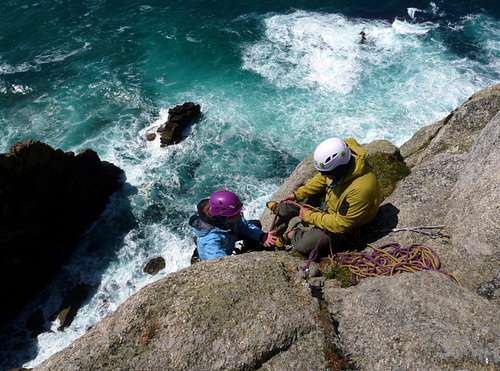
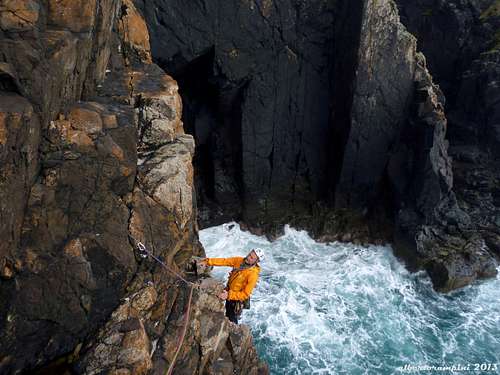
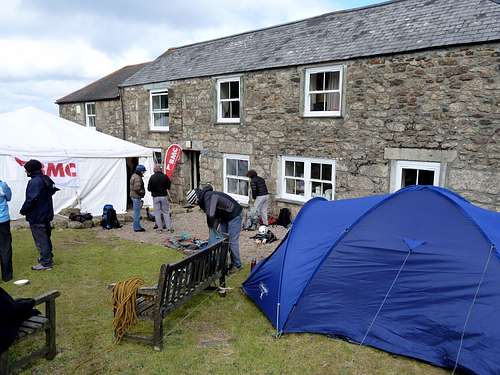
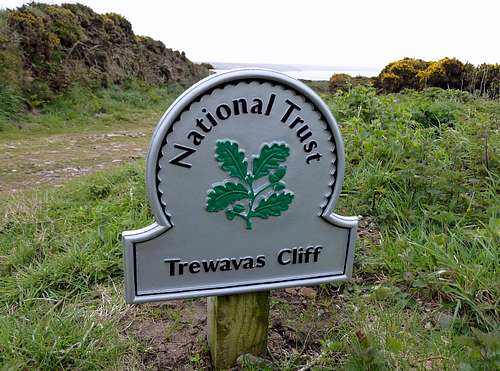
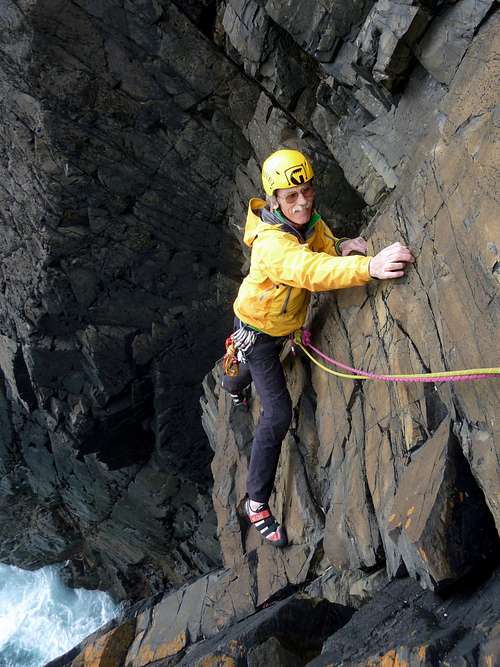

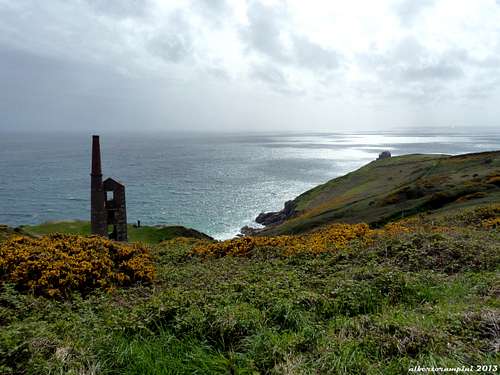






Comments
Post a Comment